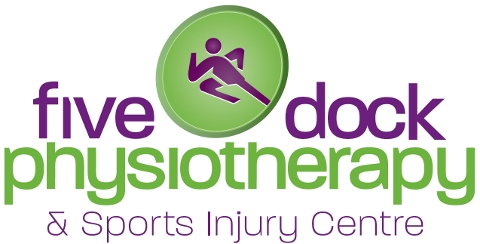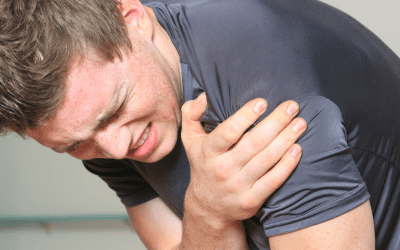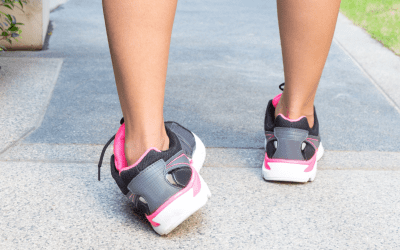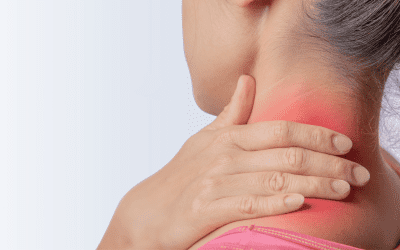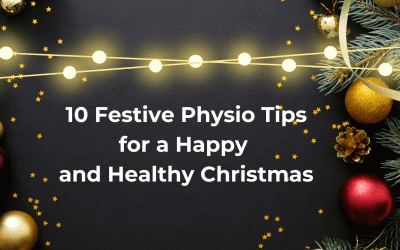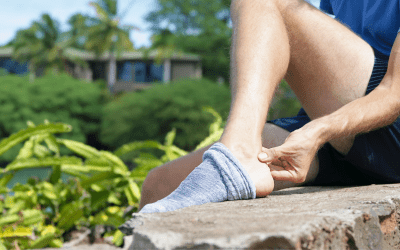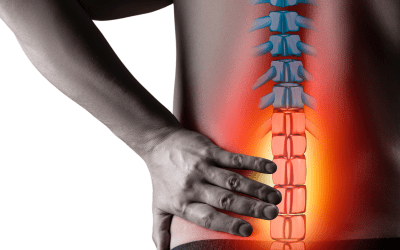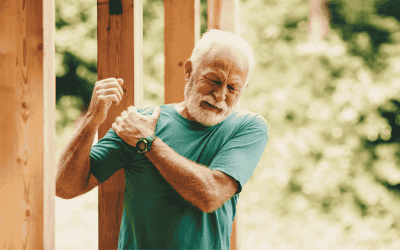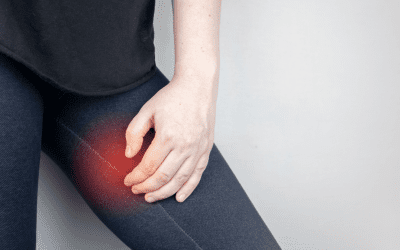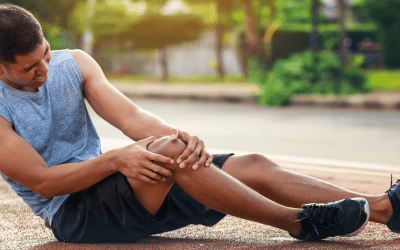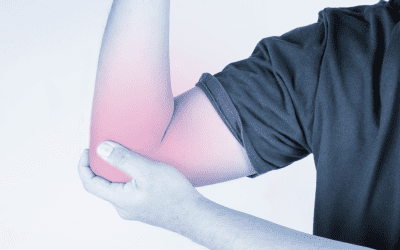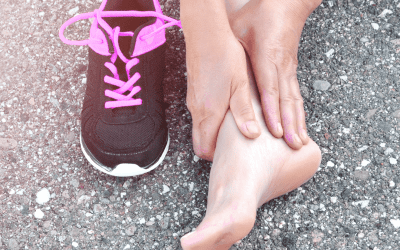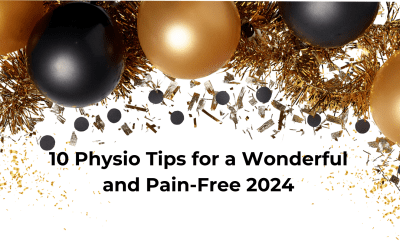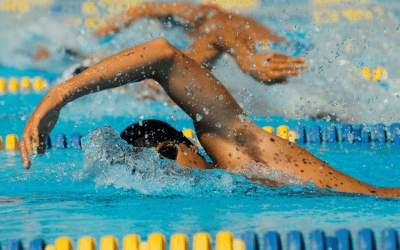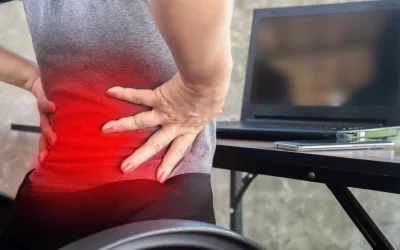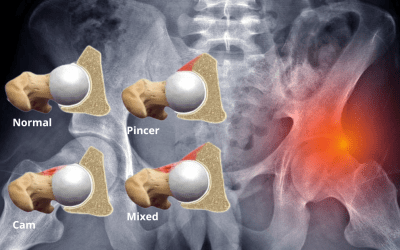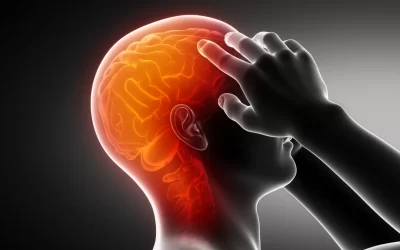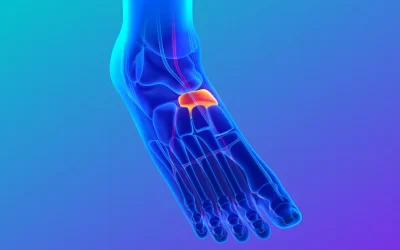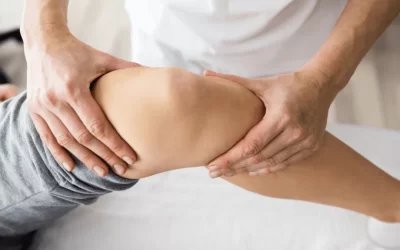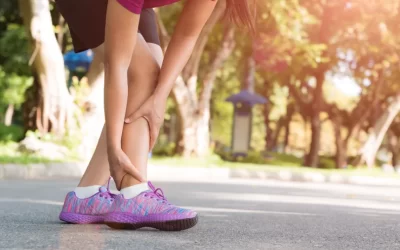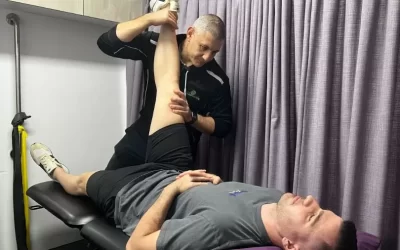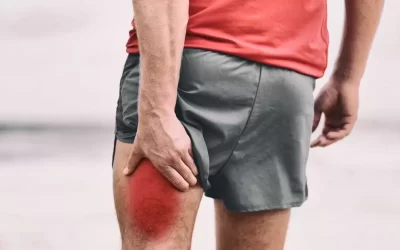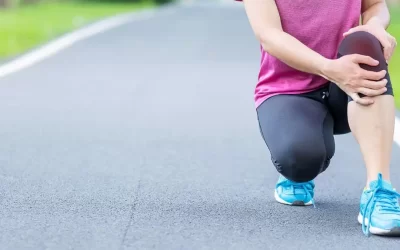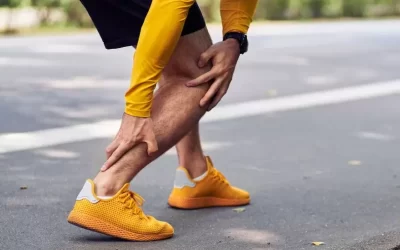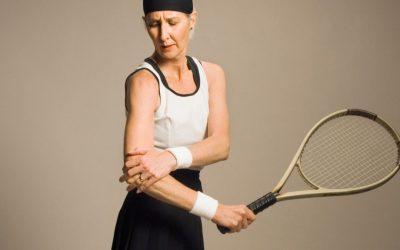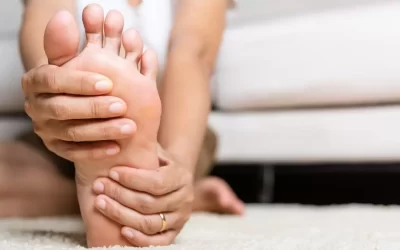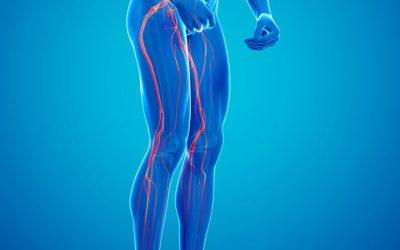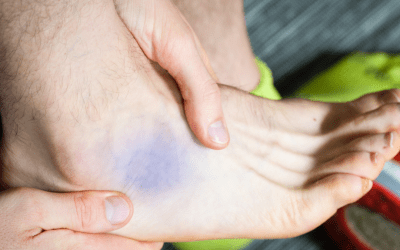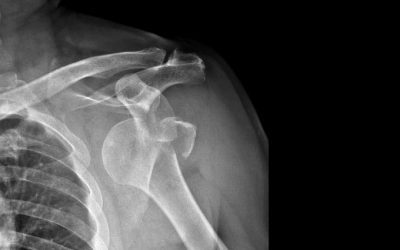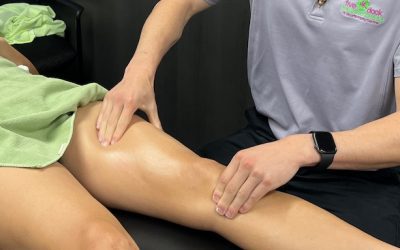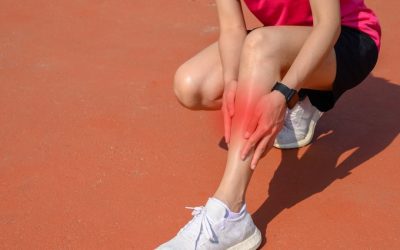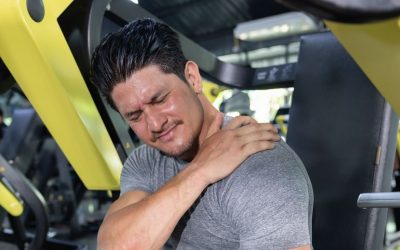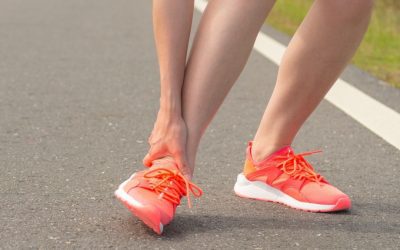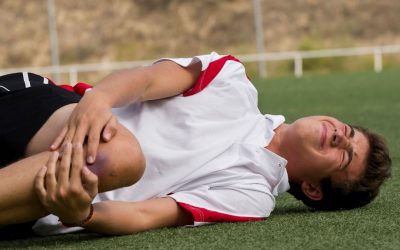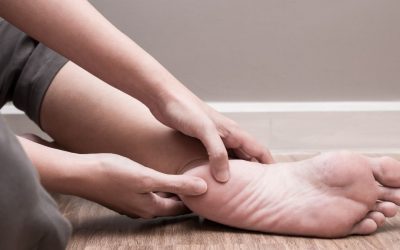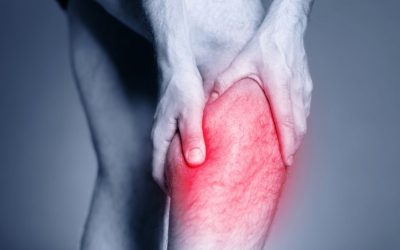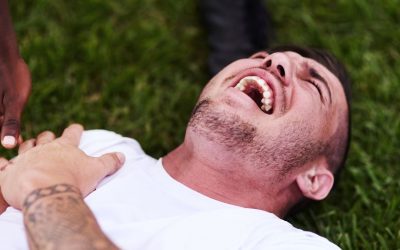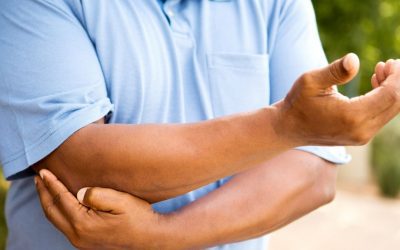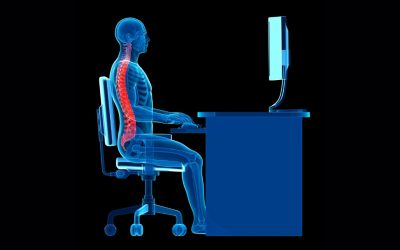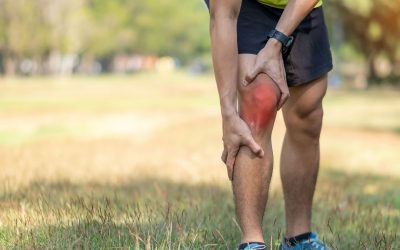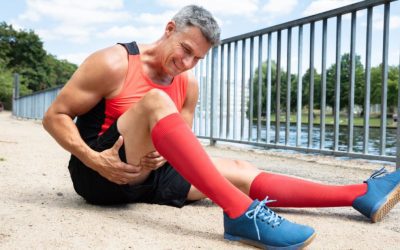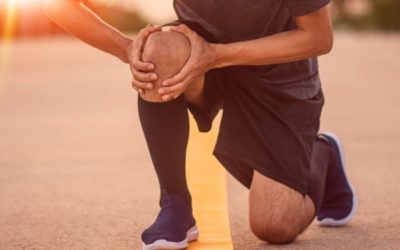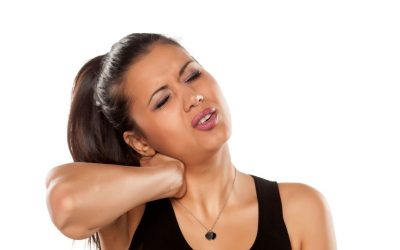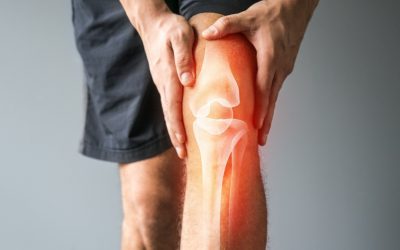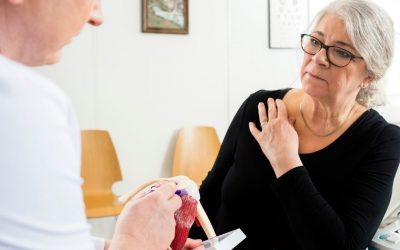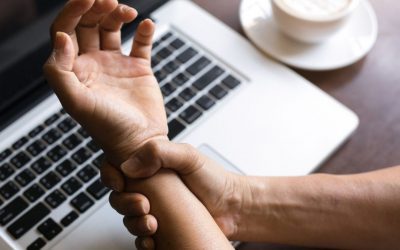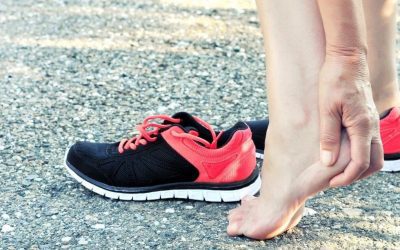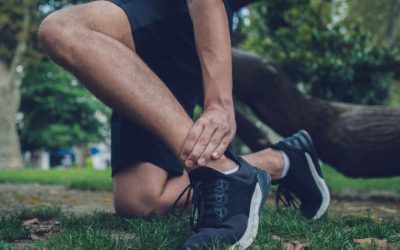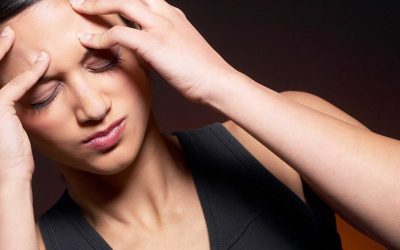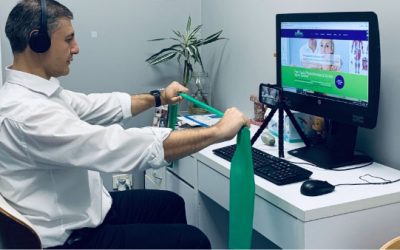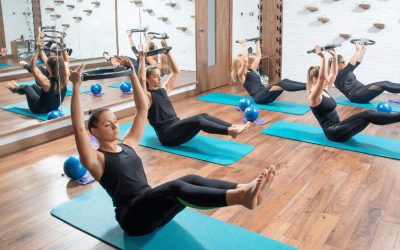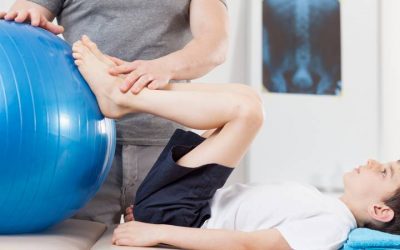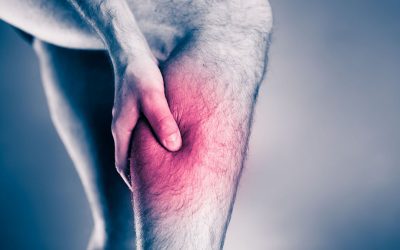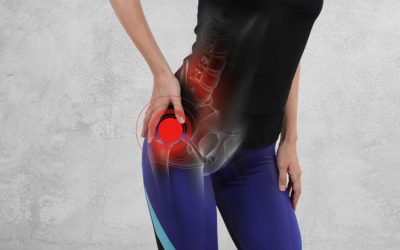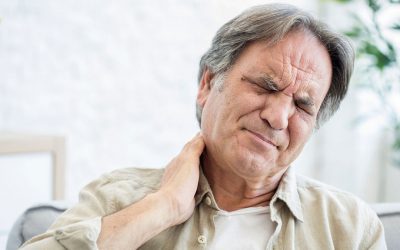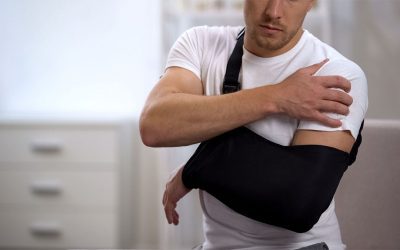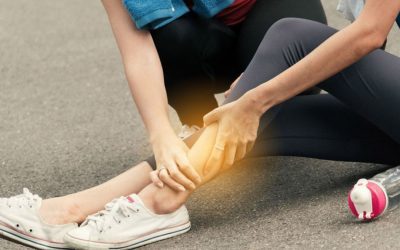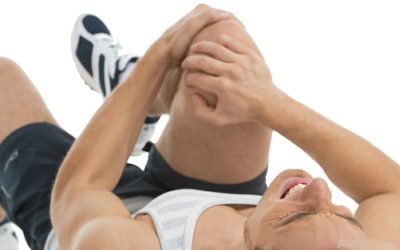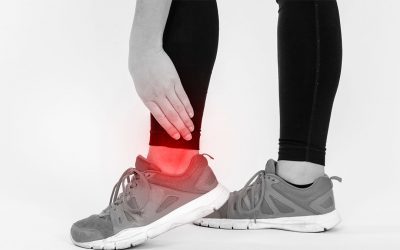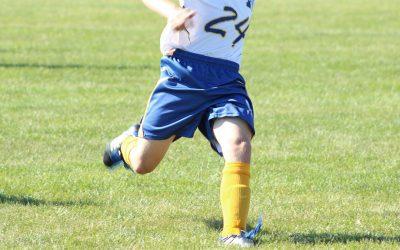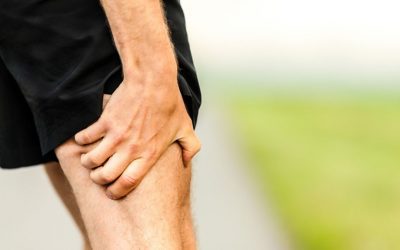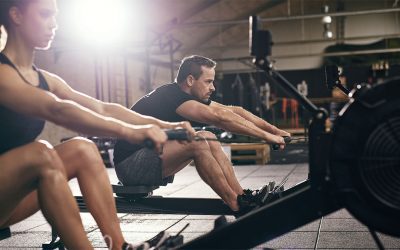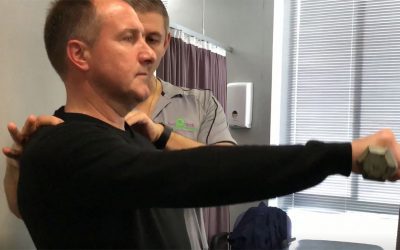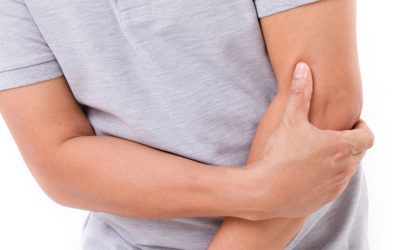Blog
Understanding Shoulder Instability
Shoulder instability can present as a full dislocation , a subluxation , or ongoing feelings of the shoulder “slipping” or being unreliable.
Lateral Ligament Injuries of the Ankle
Lateral ankle sprains are common in sports and play, with 40% leading to chronic pain, swelling, and instability lasting over a year. (Wikstrom et al., 2021; Mugno et al., 2023)
Patellofemoral Pain Syndrome
Patellofemoral Pain Syndrome is common in active individuals, especially women. It affects daily activities and may lead to long-term issues like osteoarthritis.
Understanding and Managing Neck Pain
Neck pain is often as a result of facet joint irritation, muscular dysfunction, joint hypomobility or
muscular overactivity but may also be caused by cervical joint degeneration, disc pathology or
nerve impingement.
Understanding and Managing Tennis Elbow (Lateral Epicondylalgia)
Tennis elbow, medically referred to as lateral epicondylalgia, is a prevalent and often debilitating condition that affects the extensor tendons that attach to the lateral epicondyle of the elbow (Shanmugam et al., 2024).
10 Festive Physio Tips for a Happy and Healthy Christmas
The magic of Christmas is not just in the decorations and gifts, but also in maintaining our health and well-being during this busy season.
Achilles Rupture
An Achilles rupture refers to the complete or partial tear of the Achilles tendon, which is the largest and strongest tendon in the
human body.
Sciatica
Sciatica” is a term that refers to pain that runs along the course of the sciatic nerve.
Rotator Cuff Tear
Rotator cuff disease is extremely common, affecting between 6.8% and 22.4% of the population over age 40. (Kuhn et al. 2023)
Wry Neck
Wry neck, or acute torticollis, is a condition characterized by an abnormal, asymmetrical head or neck position.
Patella Dislocation
A patella dislocation occurs when the kneecap (patella) completely moves out of its normal place in the trochlear joint groove at the end of the femur (thigh bone) typically shifting in a lateral direction (outside of knee).
Hip Labral Tear
The hip is a ball and socket joint formed between the femur and acetabulum of the pelvis. The acetabulum (the concave portion) has a ring of fibrocartilage, known as the labrum, which acts to deepen the hip joint providing more stability to keep the ball in the socket.
What is a meniscus tear?
The medial and lateral menisci are two C-shaped fibrocartilaginous structures located on the top of the tibia. They act as a shock absorber, stabiliser and are an attachment site for tendons, muscles and ligaments.
Syndesmosis / High Ankle Sprains
Often referred to as a high ankle sprain, “syndesmotic injuries, account for around 11% to 17% of total ankle sprains” (Salaameh et al, 2022). The Sydnesmosis is a complex ligamentous structure that joins the tibia and fibula just above the talus of the ankle.
What is an adductor tear or groin strain?
Adductor injuries account for 2-14% of all injuries in women and 4-19% in men participating in sport (Walden et al, 2015). The “adductors” are the six muscles that are responsible for bringing the leg towards the body’s midline. Anatomically, they lie on the medial or inside of the thigh, attaching to the pelvis and inserting into the femur. Injury or trauma to this muscle group is often referred to as a groin strain or tear.
Iliotibial Band Syndrome – ITBS
liotibial Band Syndrome – ITBS is an overuse injury of the lateral knee. Pain often presents as a localised, burning sensation – usually following an increase in load or activity.
Golfers Elbow – Flexor Tendinopathy
Medically known as medial epicondylalgia or a flexor tendinopathy, Golfer’s elbow is a painful and irritable condition affecting the tendons that attach at the common flexor origin of the medial elbow
Tibialis Posterior Tendinopathy
The Tibialis Posterior is a muscle that runs down the inside of the shin and attaches into the Navicular and medial cuneiform bones of the midfoot (Corcoran & Varacallo, 2023). It acts as the primary dynamic stabiliser of the rearfoot and medial longitudinal arch.
10 Physio Tips for a Wonderful and Pain-Free 2024
s we bid farewell to 2023 and welcome 2024, it's a great time to set intentions for a healthier, happier year ahead. At Five Dock Physiotherapy & Sports Injury Centre, we're committed to helping you achieve your health goals. As such, here are 10 physio tips to...
10 Festive Physio Tips for a Merry and Healthy Christmas
The magic of Christmas is not just in the decorations and gifts, but also in maintaining our health and well-being during this busy season. At Five Dock Physiotherapy & Sports Injury Centre, we've tailored 10 festive physio tips to keep you merry and bright, and...
Physio Management of Swimmer’s Shoulder
Swimmer’s Shoulder is a term often used to describe a range of painful shoulder overuse injuries due to the constant overhead arm movements in regular swimmers.
Lower Back Pain
Lower back pain (LBP) is the most common musculoskeletal injury, with 70-90% of the population experiencing LBP at some point in their life (de Luca et al., 2019). Early diagnosis and management is vital, as up to 30% of episodes can become chronic without the...
Hip Impingement
Hip impingement, also known as femoro-acetabular impingement (FAI), is a condition that occurs when there is abnormal contact between the femoral head (the ball of the hip joint) and the acetabulum (the socket of the hip joint). This contact can cause damage to the...
Cervicogenic Headaches
Cervicogenic headaches are a common musculoskeletal problem linked with neck pain and neck dysfunction. The Headache Research Foundation (2020) revealed that 90% of intermittent headaches and migraines can be attributed to neck pain. These are known as cervicogenic headaches.
Navicular Stress Fracture
What causes a Navicular stress fracture? The navicular, one of the 7 tarsal bones, is a bone located on the medial side or the inside of the foot. It provides stability to the arch of the foot and allows force to be transmitted for push off when walking. Navicular...
ACL (Anterior Cruciate Ligament) Injuries
The ACL is the most commonly injured ligament in the knee (Evens et al., 2022) and unfortunately, Australia has the highest reported rates of ACL injury and reconstruction in the world (Vertullo et al., 2018)…but do they all require surgery?
Ankle Ligament Sprains/Tears
According to the ABS an estimated 2 million Australians experience ankle sprains each year, with around 85% of these injuries occurring during sports or recreational activities.
The Critical Role of Physiotherapy After Sustaining a Sports Injury
Sports injuries can be frustrating and debilitating, often leaving both recreational and elite athletes sidelined and unable to perform at their best. While rest and recovery are essential components of the healing process, the importance of physiotherapy in sports injury rehabilitation cannot be overstated.
Hamstring Tears
Hamstring muscle injuries are one of the most common injuries in sports, with incidence rates ranging from 12-31% per season in soccer players (Ekstrand et al., 2011), 16-25% in track & field athletes (Askling et al., 2007) and up to 21% in Australian rules football. (Brukner et al., 2017).
What is patellofemoral pain
Patellofemoral Pain Syndrome (PFPS) is a common cause of knee pain seen in the general population, and largely experienced in those participating in sport and exercise. The most common symptom of PFPS is pain occurring at the front/inside of the knee during loaded knee flexion positions such as walking upstairs/downstairs, prolonged sitting, squatting, running, or jumping.
Achilles tendinopathy
The Achilles tendon is the combined tendon of the gastrocnemius and soleus muscles and is the strongest tendon in the body.
It is prone to injury when exposed to activities involving repetitive high loads leading to pathological changes in the tendon due to this overuse and chronic stress. Repetitive high loads may include running, jumping, sudden acceleration or deceleration, or simply too much time on your feet in less supportive shoes.
What Causes Tennis Elbow or an Extensor Tendinopathy?
Tennis elbow is a painful and irritable condition affecting the tendons that attach at the common extensor origin of the lateral elbow. It’s medically known as lateral epicondylalgia, and it is also commonly referred to as an extensor tendinopathy.
Heel pain – Plantar Fasciopathy
Sciatica is a symptom rather than a specific diagnosis. Sciatica refers to symptoms that travel down the leg along the path of the sciatic nerve.
5 Tips to have a Happy Holiday Season
Sciatica is a symptom rather than a specific diagnosis. Sciatica refers to symptoms that travel down the leg along the path of the sciatic nerve.
Sciatica
Sciatica is a symptom rather than a specific diagnosis. Sciatica refers to symptoms that travel down the leg along the path of the sciatic nerve.
Lisfranc Injury
Lisfranc (midfoot or tarsometatarsal joint) injuries result when the bones in the midfoot are broken or
ligaments that support the midfoot are torn. The severity of the injury can vary from simple to
complex, involving many joints and bones in the midfoot.
Neck Pain
Neck pain is often as a result of facet joint irritation, muscular dysfunction, joint hypomobility but may also be caused by cervical joint degeneration, disc pathology or …
Shoulder Dislocation
The shoulder joint is the most mobile joint in the body and is comprised of the articulation between the scapula, humerus and clavicle. Due to its high degree of mobility, the glenohumeral joint is the most commonly dislocated joint in the body accounting for 50% of all major joint dislocations and makes up the majority of traumatic sporting injuries.
Quadricep Tears
Your Quadricep Muscles are a group of muscles at the front of your thigh. Primarily these 4 muscles as a group extend your knee and ensure that your patella tracks correctly.
Shin Splints
Shin splints or Medial Tibial Stress Syndrome (MTSS) can be described as leg pain along the posterior medial border of the tibia (inside part of your shin bone). It is highly prevalent in both athletes and recreational runners with up to 35% and 20% experiencing MTSS in both groups respectively.
ACL Injuries
The ACL is considered the primary stabiliser of the knee joint contributing to about 85% of knee stability (Grey et al, 2017).
Rotator Cuff Tears
The Rotator Cuff (RC) is comprised of 4 muscles and their tendons: Supraspinatus, Infraspinatus, Subscapularis and Teres Minor.
Strains & Spains
Ligaments are bands of tough, flexible fibrous connective tissue with long parallel fibresTears (often called sprains) occur when a sudden and forceful movement over a joint causes the ligament fibres to stretch beyond their capacity and tear. This leads to bleeding and an immediate inflammatory response (pain and swelling).
Meniscal Tears
The medial and lateral menisci are two C-shaped fibrocartilaginous structures located on the top of the tibia. They act as a shock absorber, stabiliser and are an attachment site for tendons, muscles and ligaments.
Plantar Fasciopathy
Plantar fasciopathy (PF) is one of the most common causes of heel pain.
It involves inflammation of a thick band of tissue that runs across the bottom of your foot and connects your heel bone to your toes (plantar fascia).
Calf Tears
The calf muscles comprise of the gastrocnemius and soleus muscles. The gastrocnemius is one of the main plantar flexors of the ankle. It is comprised of two muscle bellies, with the medial head having a mechanical advantage. It is therefore able to generate more force, making it more susceptible to injury compared to the lateral head.
“Pop” goes the shoulder
The glenohumeral or shoulder joint is the most commonly dislocated joint in the body accounting for 50% of all major joint dislocations and unfortunately, shoulder dislocations make up the majority of traumatic sporting injuries.
Golfer’s Elbow – not always from golf!
Golfer’s elbow is a painful and irritable condition affecting the tendons that attach at the common flexor origin of the medial elbow. It’s medically known as medial epicondylalgia and it is also commonly referred to as an flexor tendinopathy. Golfer’s elbow is equally common in men and women and peaks in prevalence between the ages of 35 and 45.
A Pain in the Back
Have you ever experienced lower back pain? Chances are that you have, as lower back pain (LBP) is the most common musculoskeletal injury with reports that 80% of the population (Holmes et al, 2015) will experience LBP at some point in their life and every year up to 36% of the population will have an episode of LBP (Hoy et al, 2010).
5 Tips to Set Up Your Computer During Lock Down
As NSW continues to be in lock down, many people continue to work and study from home with less-than-ideal workstations and poor ergonomic set up. Unfortunately, poor workstation set up can increase the risk of neck pain, headaches, and back pain.
If you or a loved one is in this category, working or studying from home, please read the following 5 Tips to Set Up Your Computer during lockdown, to help prevent pain or injury arising.
Patellofemoral Pain Syndrome – PFPS during lockdown
Patellofemoral Pain Syndrome (PFPS) is a common cause of knee pain seen in the general population, and largely experienced in those participating in sport and exercise. There has certainly been a rise in people complaining of PFPS with the increase in outdoor exercise during COVID lockdown as people look to walking and running for exercise and sanity. Unfortunately, PFPS can affect regular activities of daily living and can limit participation in exercise and organised sport.
6 Physio Tips To Survive Sydney’s Lockdown
With so many people either off work or working and studying from home, we have seen a spike in patients presenting to us with neck and back pain, so rather than sitting in your un-comfy chair for 8 hours+ a day waiting for back or neck pain to pounce, a pre-emptive strike is required! Hopefully these tips will help you make some subtle changes to your daily routine to help avoid pain during this lock down period.
Why should I get my hamstring tear assessed?
Hamstring tears are among the most common sporting injuries accounting for one in every five to six sports injuries. They are generally associated with maximal exertion sprinting, acceleration or kicking. Unfortunately, up to a third of sustained hamstring injuries recur with greater severity. As it’s muscle that crosses over two joints, the hamstring has reduced capacity to withstand tension or the force that goes through it, thus making it more susceptible to injury.
Knee Dislocations
Patella dislocations are a common injury and account for approximately 2 to 3% of all knee injuries (Atkin et al, 2020). A patella dislocation occurs when the patella (kneecap) moves out of the groove in which it usually sits, typically shifting in an outward direction. The patella can either dislocate (completely pop out of this groove), or partially dislocate, known as a patella subluxation. Dislocation mostly occurs following a disruption of the medial patellofemoral ligament (MPFL), and can occur during both contact and non-contact activities. The recurrence rate following a first-time dislocation can be as high as 15-60% (Hayat et al, 2020).
High Ankle Sprain
Have you ever hurt your ankle playing sport and are struggling to walk? Your walking is not improving, and it feels different to a normal ankle sprain? Maybe you have a fracture? Or is it a syndesmosis injury?
What Is Wry neck?
Have you ever woken up in the morning with a sore neck, muscle spasm and the inability to turn your head? Well, this is the typical presentation of an acute wry neck.
Often sufferers of an acute wry neck have no idea what brought on the symptoms. It may occur after sleeping with an …
What is the Meniscus?
The medial and lateral menisci are two C-shaped fibrocartilaginous structures found on the boney surfaces of the knee. They act as a shock absorber, help stabilise the knee and are an attachment site for tendons, muscles and ligaments.
Shoulder—Rotator Cuff Pathology
Rotator cuff disease is prevalent in the general population, accounting for 10% of all shoulder pain and resulting in major shoulder disability (Abdulwahab et al, 2017). Shoulder pain is the third most common cause of musculoskeletal consultation in primary care...
De Quervain’s tenosynovitis – Wrist
De Quervain’s tenosynovitis is a common cause of wrist pain in adults, typically presenting as thumb sided wrist pain. It is described as inflammation of the tendons within the first extensor compartment of the wrist, resulting in local pain and swelling. Rabin et al...
What is Plantar Fasciopathy?
Plantar Fasciopathy (PF), formerly called plantar fasciitis a common condition that appears in our clinic. It involves pain and structural changes that occur at the insertion of the plantar fascia into the heel bone. PF has an estimated prevalence of 3.6-7% and is the...
How Should I Manage My Ankle Injury?
Approximately 40% of all traumatic ankle injuries occur during sport. They are considered one of the most common sporting injuries, however interestingly, only 50% of those injured, seek medical attention (Vuuberg et al, 2018). Ankle injuries have a high prevalence in...
What is the AxIT?
The AxIT system is the world’s first complete objective movement assessment solution. We recently purchased this system to benefit the range of patients that we see in our clinic including everyday patients with musculoskeletal pain and injury, sports people, work...
Cervicogenic Headaches
Cervicogenic headaches are a type of secondary headache that come from your neck, arising from disorder or dysfunction of the cervical spine (neck). Medically, cervicogenic headaches are often described as referred pain into the head, due to convergence of the upper...
What is a Virtual Physio Consultation?
Known to some as telehealth or a video consultation, Virtual Physio Consultations are the next big thing. They are the newest way that we are able to assist our patients struggling with Pain, Injury or Movement Dysfunction no matter where they are in the world,...
The Benefits of Clinical Pilates
The Benefits Of Clinical Pilates Clinical Pilates is a form of physical exercise that focuses on improving posture, core stability, balance, control, strength, flexibility, and breathing. It’s popularity has grown both in the general population but also within the...
Lower Back Stress Injuries & Fractures
Lower Back Injury Has your child been complaining of lower back pain or stiffness during sport and activity? This might be a helpful article to read as we will give you some insight into an unfortunate common cause of adolescent back pain known in the medical world as...
How do I manage a Calf Tear??
Managing A Calf Tear Calf tears, know in the medical world as Gastrocnemius tears, are a commonly torn lower limb muscle accounting for 12% of all muscle tears (Armfield et al 2006). They occur frequently in athletic populations with research suggesting that the...
What A Pain In The Hip
Lateral Hip Pain We’re aware that normally the phrase is “What a pain in the Butt”, but in this instance, although we’re talking about one of your Butt muscles, it presents as “A Pain in the Hip”, well lateral hip at least. Today we are discussing lateral hip pain –...
What can I do about neck Osteoarthritis
Tips For Neck Osteoarthritis Did you know that 70% of the population will experience neck pain at some point in their lives. The estimated occurrence of neck pain in adults annually is between 10.4% to 21.3%, with a higher occurrence in office workers and females....
What’s A Shoulder Dislocation & How Should I Manage It?
Shoulder Dislocation The shoulder is the most mobile joint in the entire body and as a result it is also the most commonly dislocated joint accounting for 50% of all major joint dislocations and it makes up the majority of traumatic sporting injuries. ...
Five things you need to know about Shin Splints
What You Need To Know About Shin Splints Are you experiencing pain around your shins or lower legs whenever you run or exercise?Is it particularly sore after you exercise or the next day?Is the pain stopping you from reaching your goals or performing optimally?You...
I think I’ve torn my ACL, what do I do now ?
ACL Tear – What Do You Do? Your opponent tries to get past you. As you turn to chase them, your foot stays planted. You hear a “pop”. Immediate pain is felt. You scream out as you fall to the ground and grab your knee “what the hell just happened?” Unfortunately, this...
Simple ankle sprain or something more serious?
Approximately 40% of all traumatic ankle injuries occur during sport, with only 50% of people seeking medical attention (Vuuberg et al. 2018). The ankle is comprised of multiple joints and ligaments. As a result, ankle ligament injuries aren’t always as simple as...
5 steps to helping your child with Osgood-Schlatter Disease (OSD)
Osgood-Schlatter Disease is the term given to a knee condition often seen in adolescents going through a growth spurt. The condition develops around the growth plate near the top of the tibia and repeated stress on the bony attachment site causes pain. Often, the...
I’ve torn my hamstring, what should I do?
Hamstring tears are among the most common injury in sports, accounting for 15% of AFL injuries and 12% of soccer injuries. Generally speaking one in every five or six injuries sustained during sport is a hamstring tear. They are most often associated with maximal...
What is pre-season strength and conditioning & why is it important?
Pre-season strength and conditioning programs prepare athletes for their grueling upcoming season and are also used to assist with injury prevention. Many sports are “Seasonal sports” and are not played all year round, which means that athletes will not be competing...
Troubled by shoulder pain? Could it be a Rotator Cuff Tear?
Do you have a sore Shoulder? Does it hurt when you reach out or try to lift your hand above your head? Is it affecting your ability to put the clothes on the line, work or train? What is it that’s causing this pain? Could it be a Rotator Cuff Tear? The shoulder joint...
What is Tennis Elbow & How Did I Get It Without Playing Tennis?
Although commonly referred to as “Tennis Elbow” this term doesn’t really give you much idea of what is going on with your elbow does it?! It can be quite disheartening when you’ve never picked up a tennis racket in your life but then Dr Google or your GP diagnoses you...
